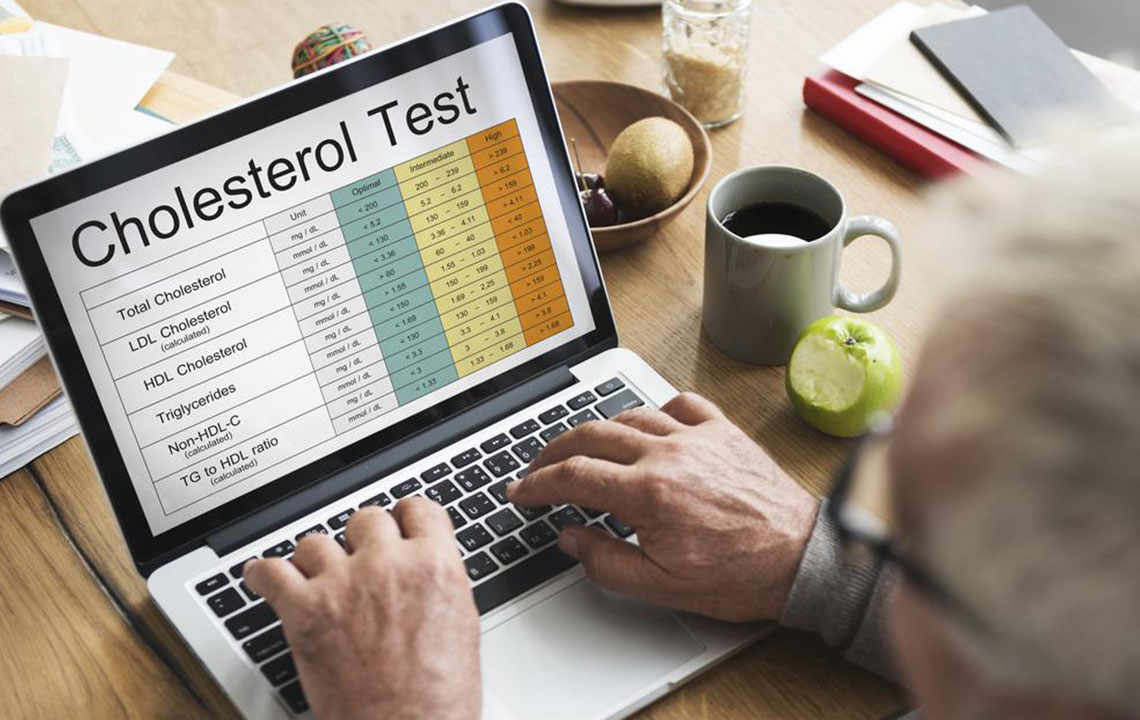10 Things to Know about Cholesterol Levels Chart
It is said that all things should occur in moderation; excess of anything is bad and harmful. Cholesterol is one such thing. It is an essential substance needed by your body. A waxy fat-like substance, cholesterol is present in all the cells of your body. Cholesterol is essential to make hormones and for the absorption of Vitamin D and other substances in your body that is necessary during the process of digestion.

Lipoproteins are of two types: low-density lipoproteins (LDL) and high-density lipoproteins (HDL). LDL is also known as bad cholesterol as it blocks your arteries with excess cholesterol. This narrows the blood vessels, thus reducing the flow of blood to the heart. People with high levels of LDL are at a greater risk of heart strokes, and diseases related to the arteries. HDL, on the other hand, is also known as good cholesterol, as it carries cholesterol from the different parts of the body to the liver, where the cholesterol is processed and eliminated from the body. This prevents the buildup of cholesterol in the arteries. Your body needs balanced and healthy levels of both these lipoproteins for a good health.
Another factor that affects cholesterol levels is the count of triglycerides, which are a little different but the basic form of fats in your body. The end product of all the fats that you consume is turned into triglycerides. These are basically the flab that you find in your belly and hips. Unused carbohydrates and fats are also converted into triglycerides.
It is recommended that people above the age of 40 should regularly undergo tests to check their cholesterols levels. Once you cross the age of 20, you should have your cholesterol levels checked every 4 to 6 years. Cholesterol levels are measured by conducting a blood test known as the lipoprotein profile or lipoprotein analysis. The results of this test are in the form of cholesterol levels charts. Here are ten things you should know that will help to make your cholesterol levels charts easier to understand:
- Total cholesterol: Your lipoprotein profile will measure your total cholesterol. This is the total count of LDL cholesterol, HDL cholesterol and other lipid components including 20% of your triglycerides.
- Acceptable levels of total cholesterol for adults: For adults, a total cholesterol level of 200 mg/dL (milligrams per deciliter) is considered good. A borderline level would be between 200 and 239 mg/dL. If your total cholesterol level goes above 240 mg/dL, you are at a very high risk of suffering from cardiac and artery-related problems.
- Acceptable levels of total cholesterol for children: A total cholesterol level of 170 mg/dL or less is a safe zone for children. A borderline level where you should be wary about health issues would be from 170 mg/dL to 199 mg/dL. Any count over 200 mg/dL is considered extremely unhealthy.
- HDL Cholesterol: The level of HDL or good cholesterol indicates whether your body is capable of preventing the buildup of cholesterol in the arteries.
- Acceptable levels of HDL cholesterol in adults: An HDL level of 40 mg/dL or higher (around 60 mg/dL) is good for protection against heart diseases. For men, a count below 40 mg/dL is considered a risk; whereas, for women, an HDL level below 50 mg/dL is considered as a risk factor.
- Acceptable levels of HDL cholesterol in children: An HDL level is 45 mg/dL and above is a safe zone for children. Any count below 40 mg/dL is a cause for concern. If your child’s HDL cholesterol level is between 40 and 45 mg/dL, you need to make changes in their diet so that it is rich in HDL.
- LDL Cholesterol: LDL levels indicate the degree of risk for heart diseases and problems related to a blocked artery.
Acceptable levels of LDL cholesterol in adults: Your LDL cholesterol level is in the safe zone if your test shows the value is less than 100 mg/dL. You will need to watch your diet and health if your LDL levels are between 130 mg/dL and 159 mg/dL. An LDL count of 160 mg/dL or higher is extremely unhealthy. - Acceptable levels of LDL cholesterol in children: An LDL cholesterol count of 110 mg/dL or less is considered to be within healthy limits. If the tests results show an LDL count of 130 mg/dL or more, your child would be at a higher risk of heart-related diseases.
- Levels of triglycerides: Your cholesterol levels chart will also show the levels of triglycerides in your bloodstream. In adults, triglycerides levels of 149 mg/dL or less are considered healthy.
- Anything above 200 mg/dL is a high-risk factor. For children in the age group 0 to 9 years, triglycerides levels should be less than 75 mg/dL. A healthy level of triglycerides for those between the ages of 10 years to 19 years is 90 mg/dL. A triglyceride count of 100 or more is unhealthy in children who are between 0 to 9 years. For those between 10 to 19 years, an unhealthy level is 130 or higher.


